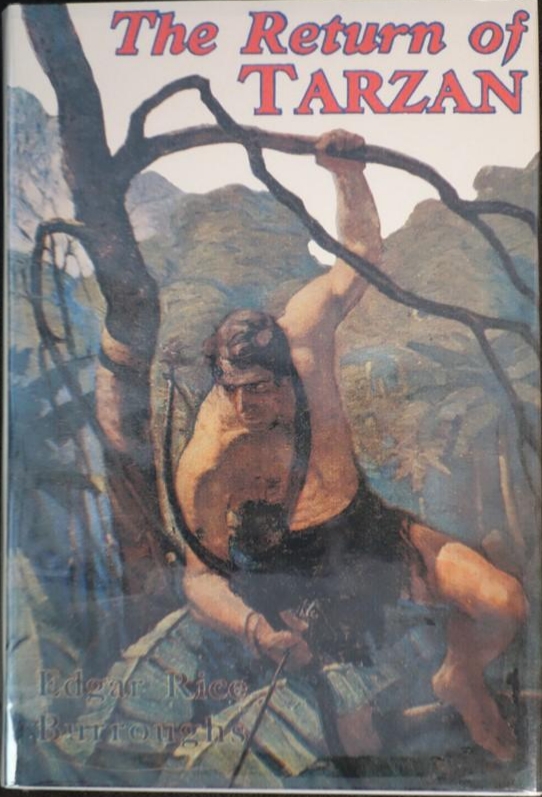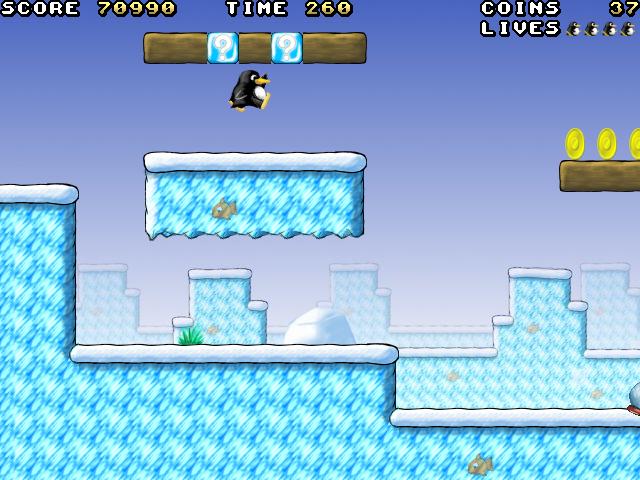|
Mr. Do's Castle
''Mr. Do's Castle'' is a platform game released in Arcade video game, arcades by Universal Entertainment, Universal in September 1983. In Japan, the game is titled ''Mr. Do! versus Unicorns''. Marketed as a sequel to the original ''Mr. Do!'' released one year earlier, the game bears a far closer resemblance to Universal's ''Space Panic'' from 1980. It began as a game called ''Knights vs. Unicorns'', but the U.S. division of Universal persuaded the Japanese arm to modify the graphics into a ''Mr. Do!'' game following the first game's popularity. Gameplay The object of ''Mr. Do's Castle'' is to score as many points as possible by collecting cherries and/or defeating unicorn-like monsters. The game takes place in a castle filled with platforms and ladders – reminiscent of ''Space Panic'' (1980) – some of which can be flipped from one platform to another, much like a kickstand on a bicycle. The player controls Mr. Do as he collects cherries by using a hammer to knock out block ... [...More Info...] [...Related Items...] OR: [Wikipedia] [Google] [Baidu] |
Universal Entertainment
formerly known as and Universal, is a Japanese manufacturer of pachinko, slot machines, arcade games and other gaming products, and a publisher of video games. Aruze possesses licenses to both manufacture and distribute casino machines in the American states of Nevada, Mississippi and New Jersey. The company's corporate headquarters are in Tokyo. Aruze is also the licence holder of the video game franchise ''Shadow Hearts''. Up until February 18, 2012, the company owned approximately 21% of Wynn Resorts. On November 1, 2009, Aruze Corporation changed its name to Universal Entertainment Corporation. Universal Universal Lease Co., Ltd was established in December 1969. It later changed its name to Universal Ltd in Japan. Universal Distributing Company opened as an american subsidiary to sell video games direct to operators, and was later named Universal USA. They initially earned success with arcade video games that cloned popular arcade games. ''Scratch'' (1977) was a ''Breakou ... [...More Info...] [...Related Items...] OR: [Wikipedia] [Google] [Baidu] |
Do! Run Run
''Do! Run Run'', also known as ''Super Pierrot'' (スーパーピエロ ''Sūpā Piero''), is the fourth and final incarnation of ''Mr. Do!'', the Universal (game company), Universal video game mascot. Returning to his Mr. Do! roots, the clown has a bouncing powerball with which to hurl at monsters. Mr. Do runs along the playfield picking up dots and leaving a line behind him, which the player is encouraged to create closed off sections with. Precariously balanced log traps can be rolled downslope, crushing enemies. The resulting game is something of a cross between ''Mr. Do!'', ''Congo Bongo'', ''Pac-Man'', and ''Qix''. Gameplay The goal of ''Do! Run Run'' is to rack up points while completing screens. A screen is completed whenever all the fruits/dots are eaten, or when all of the regular monsters (not Alpha-monsters or their sidekicks) are defeated. Using the rope that follows Mr. Do to inscribe dots will convert them into cherries, a familiar fruit for Mr. Do to collect. ... [...More Info...] [...Related Items...] OR: [Wikipedia] [Google] [Baidu] |
Video Games Developed In Japan
Video games are a major industry in Japan, and the country is considered one of the most influential in video gaming. Japanese game development is often identified with the Golden age of arcade video games, golden age of video games and the country is home to many notable video game companies such as Nintendo, Sega, Bandai Namco Entertainment, Taito, Konami, Square Enix, Capcom, NEC, SNK, Koei Tecmo, Sony and formerly its branch Sony Interactive Entertainment, Sony Computer Entertainment. In 2022, Japan was the List of video games markets by country, third largest video game market in the world after the Video games in the United States, United States and Video games in China, China. The space is known for the catalogs of several major publishers, all of whom have competed in the video game console and video arcade markets at various points. Released in 1965, ''Periscope (arcade game), Periscope'' was a major Video arcade, arcade hit in Japan, preceding several decades of succe ... [...More Info...] [...Related Items...] OR: [Wikipedia] [Google] [Baidu] |
Video Games About Clowns
Video is an electronic medium for the recording, copying, playback, broadcasting, and display of moving visual media. Video was first developed for mechanical television systems, which were quickly replaced by cathode-ray tube (CRT) systems, which, in turn, were replaced by flat-panel displays of several types. Video systems vary in display resolution, aspect ratio, refresh rate, color capabilities, and other qualities. Analog and digital variants exist and can be carried on a variety of media, including radio broadcasts, magnetic tape, optical discs, computer files, and network streaming. Etymology The word ''video'' comes from the Latin verb ''video,'' meaning to see or ''videre''. And as a noun, "that which is displayed on a (television) screen," History Analog video Video developed from facsimile systems developed in the mid-19th century. Early mechanical video scanners, such as the Nipkow disk, were patented as early as 1884, however, it took several decades b ... [...More Info...] [...Related Items...] OR: [Wikipedia] [Google] [Baidu] |
Video Game Sequels
A sequel is a work of literature, film, theatre, television, music, or video game that continuity (fiction), continues the story of, or expanded universe, expands upon, some earlier work. In the common context of a narrative work of fiction, a sequel portrays events set in the same fictional universe as an earlier work, usually chronologically following the events of that work. In many cases, the sequel continues elements of the original story, often with the same characters and settings. A sequel can lead to a film series, series, in which key elements appear repeatedly. The difference between more than one sequel and a series is somewhat arbitrary. Sequels are attractive to creators and publishers because there is less risk involved in returning to a story with known popularity rather than developing new and untested characters and settings. Audiences are sometimes eager for more stories about popular characters or settings, making the production of sequels financially appeal ... [...More Info...] [...Related Items...] OR: [Wikipedia] [Google] [Baidu] |
X68000 Games
The Shuttle Landing Facility (SLF), also known as Launch and Landing Facility (LLF) , is an airport located on Merritt Island in Brevard County, Florida, United States. It is a part of the Kennedy Space Center and was used by Space Shuttle for landing until July 2011. It was also used for takeoffs and landings for NASA training jets such as the Shuttle Carrier Aircraft and for civilian aircraft. Starting in 2015, Space Florida manages and operates the facility under a 30-year lease from NASA. In addition to ongoing use by NASA, private companies have been utilizing the SLF since the 2011 end of the Space Shuttle program. Facilities The Shuttle Landing Facility covers and has a single runway, 15/33. It is one of the longest runways in the world, at , and is wide. (Despite its length, astronaut Jack R. Lousma stated that he would have preferred the runway to be "half as wide and twice as long") Additionally, the SLF has of paved overruns at each end. The Mate-Demate Device ( ... [...More Info...] [...Related Items...] OR: [Wikipedia] [Google] [Baidu] |
Platformers
A platformer (also called a platform game, and sometimes a jump 'n' run game) is a subgenre of action game in which the core objective is to move the player character between points in an environment. Platform games are characterized by levels with uneven terrain and suspended platforms that require jumping and climbing to traverse. Other acrobatic maneuvers may factor into the gameplay, such as swinging from vines or grappling hooks, jumping off walls, gliding through the air, or bouncing from springboards or trampolines. The genre started with the 1980 arcade video game ''Space Panic'', which has ladders but not jumping. ''Donkey Kong (arcade game), Donkey Kong'', released in 1981, established a template for what were initially called "climbing games". ''Donkey Kong'' inspired many clones and games with similar elements, such as ''Miner 2049er'' (1982) and ''Kangaroo (video game), Kangaroo'' (1982), while the Sega arcade game ''Congo Bongo'' (1983) adds a third dimension via I ... [...More Info...] [...Related Items...] OR: [Wikipedia] [Google] [Baidu] |
MSX Games
The following is an incomplete list of video games for the MSX, MSX2, MSX2+, and MSX turbo R home computer Home computers were a class of microcomputers that entered the market in 1977 and became common during the 1980s. They were marketed to consumers as affordable and accessible computers that, for the first time, were intended for the use of a s ...s. Here are listed games released for the system. The total number of games published for this platform is over 2000. (Please see external links) See also * Konami Game Master (1988) * List of Konami games Notes References External links * {{Video game lists by platform # MSX games ... [...More Info...] [...Related Items...] OR: [Wikipedia] [Google] [Baidu] |
Commodore 64 Games ...
{{short description, None This is a list of games for the Commodore 64 personal computer system, sorted alphabetically. See Lists of video games for other platforms. Because of the length of the list, it has been broken down to two parts: * List of Commodore 64 games (A–M) * List of Commodore 64 games (N–Z) See also * Commodore 64 Games System * Commodore 64 The Commodore 64, also known as the C64, is an 8-bit computing, 8-bit home computer introduced in January 1982 by Commodore International (first shown at the Consumer Electronics Show, January 7–10, 1982, in Las Vegas). It has been listed in ... [...More Info...] [...Related Items...] OR: [Wikipedia] [Google] [Baidu] |
ColecoVision Games
ColecoVision is a second-generation home video-game console developed by Coleco and launched in North America in August 1982. It was released a year later in Europe by CBS Electronics as the CBS ColecoVision. The console offered a closer experience to more powerful arcade video games compared to competitors such as the Atari 2600 and Intellivision. The initial catalog of twelve games on ROM cartridge included the first home version of Nintendo's ''Donkey Kong'' as the pack-in game. Approximately 136 games were published between 1982 and 1984, including Sega's ''Zaxxon'' and some ports of lesser known arcade games that found a larger audience on the console, such as '' Lady Bug'', ''Cosmic Avenger'', and '' Venture''. Coleco released a series of hardware add-ons and special controllers to expand the capabilities of the console. "Expansion Module #1" allowed the system to play Atari 2600 cartridges. A later module converted ColecoVision into the Adam home computer. ColecoVision ... [...More Info...] [...Related Items...] OR: [Wikipedia] [Google] [Baidu] |
Atari 8-bit Computer Games
Atari () is a brand name that has been owned by several entities since its inception in 1972. It is currently owned by French holding company Atari SA (formerly Infogrames) and its focus is on "video games, consumer hardware, licensing and blockchain". The original Atari, Inc., founded in Sunnyvale, California, United States in 1972 by Nolan Bushnell and Ted Dabney, was a pioneer in arcade games, home video game consoles, and home computers. The company's products, such as ''Pong'' and the Atari 2600, helped define the electronic entertainment industry from the 1970s to the mid-1980s. In 1984, as a result of the video game crash of 1983, the assets of the home console and computer divisions of the original Atari Inc. were sold off to Jack Tramiel's Tramel Technology Ltd., which then renamed itself to Atari Corporation, while the remaining part of Atari, Inc. was renamed Atari Games Inc. In early 1985, Warner established a new corporation jointly with Namco subsequently named ... [...More Info...] [...Related Items...] OR: [Wikipedia] [Google] [Baidu] |





